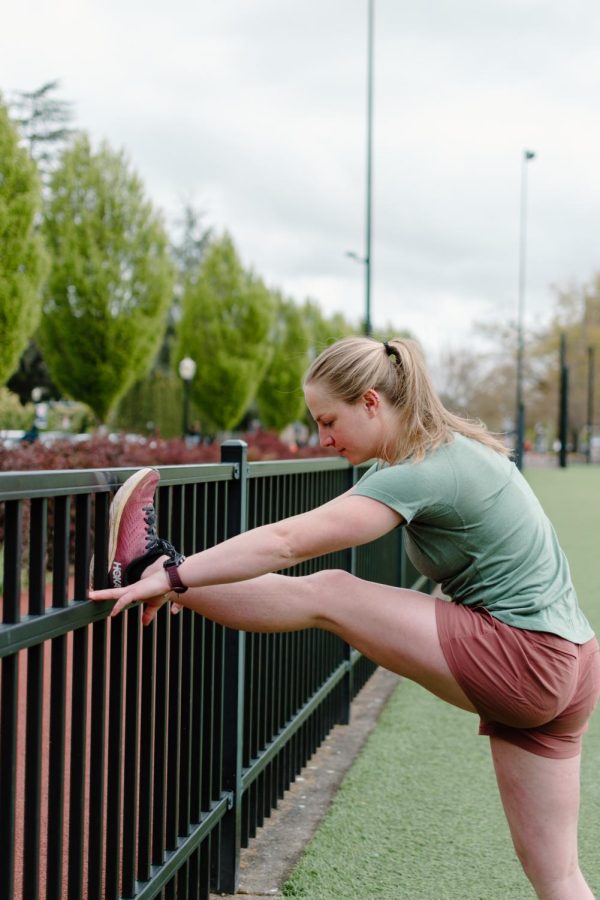OSU student runs 56 miles to fund undergraduate research
Jalyn Devereaux (she/her) stretches before running on the Intramural Fields on May 4. She ran that morning as part of her training to complete the Corvallis-to-Sea-Trail (C2C), a pathway that links the Willamette Valley and Pacific Ocean.
May 30, 2023
An Oregon State University graduate student ran the Corvallis to Coast trail with other faculty members on May 20, in hopes of raising funds for an undergraduate research program.
The OSU student, Jalyn Deveraux, said that the Corvallis to Coast Trail starts in downtown Corvallis, going all the way through the coast range and ending a little bit south of Newport. The trail is 56 miles in total, with a 1500-foot elevation gain. This run was an attempt to fund the Summer Undergraduate Research Experience program.
The SURE program gives undergraduate students an opportunity to work with faculty members and graduate students in different scientific fields. Deveraux said that this funding attempt was to make undergraduate research more accessible to students, with better funding.
“Undergraduate research is not funded, it’s all volunteer,” Deveraux said. “Then that creates more of a discrepancy … because only individuals that can afford to do unpaid internships or unpaid research experiences are the ones that end up doing it.”
Deveraux added that most biology students, who are within the college of science, need some sort of experience before getting into graduate programs, professional programs or jobs.
Gabs James, associate director of student engagement for the college of science, said that this program has been going on for over 10 years. The college of science typically has anywhere between 30 and 40 SURE scholars working over the summer on an independent research project.
This is an initiative made by some students and faculty members of the college of science in order to raise money for the SURE program. The more money they raise, the more undergraduate students will get paid for their research work.
“Some of our departments are very research-oriented. I would say biochemistry and biophysics is one of our departments in which the majority of the students in that department are encouraged and mentored to apply for research experiences,” James said.
According to Deveraux, most of the people participating in this run were faculty members and graduate students from the OSU’s Department of Integrative Biology, but everybody was welcome.
There are donors that give money to the college of science in order to give an opportunity to specific programs, such as the SURE program, or to help the college of science reach more students and have a larger impact on the community, especially with underrepresented groups.
Deveraux said that people can still donate even if they don’t participate in the run. Donations will be accepted between now and June 1 through the Beavs Give website. Donations can also be made through the donation page on the college of science website, by specifying that the donation is for the SURE program.
More information on the College of Science website: www.science.oregonstate.edu










































































































